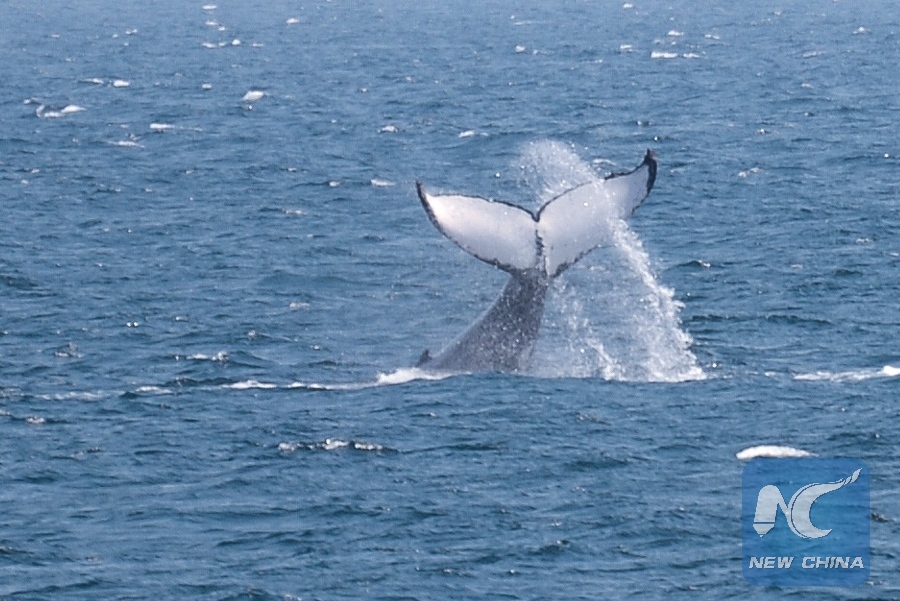
File photo taken on Oct. 20, 2013 shows that a humpback whale performs a "tail slap" in Jervis Bay off the east coast of Australia. (Xinhua/Qian Jun)
SAN FRANCISCO, July 10 (Xinhua) -- With recording devices affixed to humpback whales, Stanford University researchers have observed the whales flapping their foreflippers like penguins or sea lions, completely unlike anything seen before in whales.
The unexpected novel movement, caught on video footage of the whales feeding in groups and detailed Monday in Current Biology, helps the researchers understand more about the abilities and anatomy of these mysterious animals and could also inform bio-inspired design.
"Whales power their swimming by using their muscular tails," said Paolo Segre, a postdoctoral researcher and lead author of the paper. "However, in this case we have documented the first example of a whale flapping its flippers to move forward, using a motion similar to a bird flapping its wings."
The foreflippers of humpbacks are bumpy and slender compared to the much shorter, smoother front flippers of other whales. They are so distinctive that the scientific name for humpback whales, Megaptera novaeangliae, means "big-winged New Englander." As their foreflippers were thought mainly involved in steering, it makes sense that the unusual flipper shape could explain the humpback's skillful maneuvering.
Video tagging technology, like that developed by the lab of Jeremy Goldbogen, an assistant professor of biology at Stanford, is relatively new, so researchers have only recently had the opportunity to test and expand on this hypothesis.
Goldbogen, senior author of the paper, carries out his research at Hopkins Marine Station. Co-authors of the paper include researchers from the Department of Environmental Affairs in Cape Town, South Africa, and from Cape Peninsula University of Technology in Cape Town.
"In the past, researchers have looked at the structure of the whale flipper from dead animals," Goldbogen was quoted as explaining in a news release from Stanford. "But for the first time we can see how this structure actually is used in a living whale -- in its natural environment."
From their footage, the group estimated the hydrodynamic forces produced by the flapping and found the whales were generating a significant amount of thrust. In addition, they found this behavior was extremely rare. In hundreds of hours of video, some of which included groups of about 200 whales, they saw the foreflipper flapping twice, which may be why they're the first to report it.
"It is likely very energetically expensive and only used for short bursts of acceleration," said Segre. "It is probable that humpback whales are the only species that can do this because of the length and extensive range of motion of their flippers."
The group's next step is to create a 3-D movement and 360-degree panoramic video version of their tag that would capture a whale's entire body along with the environment around it.
"By understanding how the body flexes, and how the flippers and flukes are used to maneuver, we will have a better understanding of the mechanisms used by the largest animals to attain high-performance locomotion," said Goldbogen. "Therefore, our research has implications for the biomimetic design applications from enhanced performance of animals to mechanized submersibles."

